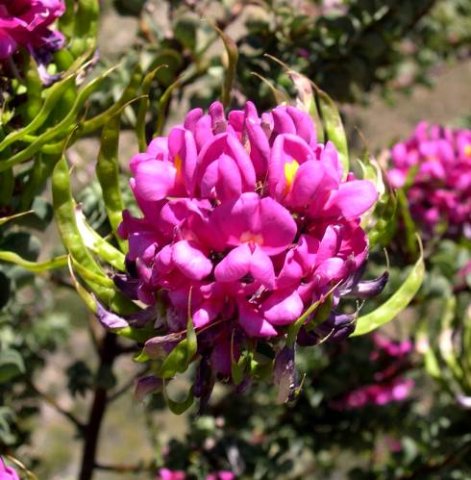Hypocalyptus sophoroides inflorescence

Author: Ivan Lätti
Photographer: Louis Jordaan
The magenta, fragrant flowers of Hypocalyptus sophoroides grow in dense, raceme-shaped inflorescences at stem-tips, comprising at least 30 flowers per tip.
There are large, membranous floral bracts over the young flowers, dropping off early. The generic name, Hypocalyptus, is derived from the Greek words, hupo meaning under and kalyptra meaning a veil or mantle, referring to the bracts over the young flowers. The upper two lobes of the hairless calyx are joined.
The peaflower-like floral structure has a broadly oval banner petal that is flexed back with a short claw bearing a callus. The wing petals are oblong to spoon-shaped, eared at the base and also short-clawed. The keel is incurved and short with an upper ear. The stamens are joined in a closed sheath.
Flowering happens from before midspring to early summer.
Some flat, strap-shaped pods are already present below the flowers in picture, the flat pods style-tipped and constricted between the spaced seeds (Vlok and Schutte-Vlok, 2015; Manning, 2007; Bean and Johns, 2005; Leistner, (Ed.), 2000; Bond and Goldblatt, 1984; Andrew, 2017; iNaturalist).

